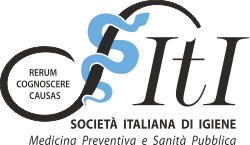The flu vaccine protects against influenza and its many complications, especially in patients with compromised immune defences.
The vaccines currently in use contain three types of viruses, and, as such, are called trivalent. The viruses to be included in the vaccine are chosen from those isolated the previous season, based on the analyses carried out on patients by a group "sentinel doctors". These doctors perform laboratory tests on all their patients showing symptoms of influenza, in order to isolate the virus in circulation and include it in the following season’s flu vaccine. The vaccine does not prevent diseases caused by other viruses or by any influenza viruses not contained in the vaccine itself. Effectiveness, that is the proportion of people who are protected from influenza following vaccination, is not 100 percent since there are influenza viruses in circulation which are different from those contained in the vaccine. For the 2011-2012 season the overall effectiveness measured was between 58 and 75 per cent1 2 3. When the number of people vaccinated increases, even if effectiveness is lower, the virus spreads less. This effect is known as herd protection.
The vaccine is administered via intramuscular or intradermal injection. In Italy, the following types of vaccines can be used4:
• Split virus vaccines contain only those particles of the virus, called antigens, that trigger a primary response and the memory cells. These are usually specific subunits that make up the outer layer of the flu virus: haemagglutinin and neuraminidase; other fragments of internal proteins and of the capsule are also found. Derived from fragmented virions and thus having a lower content of viral components, they are less reactive, therefore immunity and effectiveness are reduced.
• Virosome vaccines consist of liposomes (bi-layered lipid vesicles) which incorporate viral antigens, mimicking both the viral morphology and the antigenic presentation. To improve tolerability, egg proteins, nucleoproteins and matrix proteins have been eliminated. The virosomal influenza vaccine has proven to be highly effective for all age groups and its tolerability means it can also be used in children under the age of 12 (liposomes are the only adjuvants authorised for use in childhood). This type of flu vaccine is able to trigger a response also in the elderly. In terms of tolerability, virosomal influenza vaccines are associated with negligible adverse reactions, lower than both those associated with MF59-adjuvanted vaccine, or those linked to the whole virus vaccine against influenza.
• Adjuvant vaccines are a combination of an influenza subunit vaccine and MF59, an emulsion of oil (squalene) in water containing two non-ionic surfactants. Squalene is naturally present in our body as an immunostimulant. This vaccine has a greater immunogenicity, as demonstrated by over 20 studies involving over 12,000 subjects. The advantages were more consistent in those subjects with a poor response to traditional flu vaccines (the elderly, those who have undergone a transplant, HIV positive individuals). A study also documented the flu vaccine’s ability to trigger a partial defence even against strains of influenza viruses that are significantly different from those contained in the vaccine itself. The tolerability of the influenza vaccine adjuvanted with MF59C.1 is good, although a moderate incidence of transient local reactions is reported.
• Intradermal vaccines contain fewer antigens and, on being injected intradermally, stimulate variants of the cells of the immune system that are different from those recruited by the intramuscular vaccine. They do not contain chemical adjuvants. In individuals who do not respond to the intramuscular vaccine, they may have a higher immunogenecity than other non-adjuvanted vaccines.
Who should be vaccinated5
- Individuals aged 65 or over.
- Children and adults affected by:
- chronic diseases affecting the respiratory system (including persistent asthma, bronchopulmonary dysplasia and cystic fibrosis and chronic-obstructive bronchopathy - Bpco);
- diseases of the cardiovascular system, including congenital and acquired cardiopathies;
- kidney failure or other severe pathological conditions that increase the risk of complications;
- diseases of the hematopoietic organs;
- diabetes and other dysmetabolic diseases (including obesity with BMI> 30 and serious concomitant diseases);
- intestinal malabsorption syndromes;
- tumors;
- cystic fibrosis;
- congenital or acquired diseases that lead to a lack of defences, caused by anti-HIV drugs;
- pathologies for which major surgical interventions are scheduled;
- pathologies associated with increased risk of aspiration of respiratory secretions (eg neuromuscular diseases);
- chronic liver diseases;
- children and adolescents on long-term treatment with acetylsalicylic acid, at risk of Reye's syndrome in case of flu infection;
- women who are in the second and third trimesters at the beginning of the epidemic season;
- individuals of any age admitted to long-term care facilities.
- Furthermore the vaccination is offered, for the purpose of interrupting the transmission chain, to certain categories:
- health care personnel;
- family members of high-risk individuals;
- frontline public service employees:
- nursery workers and school teachers;
- post and telecommunications employees;
- public administration and defence employees;
- police forces including municipal police;
- volunteers for the emergency health services;
- nursing home assistance staff;
- personnel who, for employment reasons, are in contact with animals that could be sources of influenza virus infection:
- livestock breeders;
- workers involved in breeding animals;
- workers involved in transport of live animals;
- public and professional veterinarians.
When to vaccinate
The vaccine should be administered between mid-October and late December. We are protected from influenza two weeks after receiving the vaccine. This protection lasts at least a year, but even longer if you have received the adjuvanted vaccine.
How to vaccinate6
Since most of the population has in all probability been infected with influenza A / H3N2, A / 1-11N1 and B viruses over the past few years, a single dose of influenza vaccine is sufficient for individuals of all ages.
Only for children under 9 years of age, who have not been previously vaccinated: two doses are recommended in an age-appropriate dosage (from 6 to 36 months ½ dose, 1 dose over 36 months) to be administered at least four weeks apart to ensure a satisfactory level of protection.
The flu vaccine should be administered intramuscularly or, intradermally (the intradermal vaccine). The deltoid is the recommended inoculation site for the intramuscular vaccine for all subjects over 9 years of age; in younger children and infants the recommended site is the anterolateral thigh.
The flu vaccine can be given at the same time as other vaccines, both paediatric and adult ones, using different injection sites and syringes. A characteristic of influenza viruses is indeed the fact that it is constantly changing, therefore vaccination should take place every year.
Who should not be vaccinated or should postpone the vaccination5
Subjects who have experienced previous anaphylactic type reactions to egg proteins or other components of the vaccine;
- children under 6 months;
- those with acute febrile illnesses.
Vaccination risks
It must be emphasised that any of the risks of vaccination, although they do exist, are always lower than the risks associated with contracting the flu. The main adverse reactions are:
- redness, swelling, hardening at the injection site are the most frequent local reactions (about 15% of those vaccinated with the intramuscular vaccine, and 61% of those vaccinated intradermally) and occur between 6 and 24 hours after vaccination. They have a short duration (maximum 2 days) 7;
- mild systemic flu-like symptoms (about 42% of those vaccinated), have the same short duration as the local symptoms3;
- serious adverse reactions (including death, permanent disabilities, hospitalisation, need for the emergency department) with a frequency of 2.6 x 10,000.8
Sources / Bibliography
- Jefferson T et al, Vaccines for preventing influenza in the elderly. Cochrane database of Systematic Reviews, 2010.
- Marta Ciofi degli Atti, Caterina Rizzo, Cristina Rota, Stefania Salmaso. Vaccinazione antinfluenzale: considerazioni sull'efficacia. http://epicentro.iss.it/discussioni/antinfluenzale/commentocnesps.j.asp
- Manzoli Lamberto, John P.A. Ioannidis, Flacco Maria Elena, De Vito Corrado, Villari Paolo. Effectiveness and harms of seasonal and pandemic influenza vaccines in children, adults and elderly. Hum. Vaccin Immunother. 2012 July 1; 8(7):851- 862
- http://www.informazionisuifarmaci.it/database/fcr/sids.nsf/pagine/592642473f0ee4eac125721e00471342?opendocument
- http://www.salute.gov.it/influenza/paginaInternaMenuInfluenza.jsp?id=686&menu=vaccinazione
- http://www.flu.iss.it/vaccinazione.htm
- Icardi G, Orsi A, Ceravolo A, Ansaldi F. Current evidence on intradermal influenza vaccines administered by Soluvia licensed microiniection System. Human vaccin Immunother. 2012 Jan; 8 (1): 67- 75
- frequenza calcolata dal totale delle segnalazioni per reazioni avverse gravi per tutti i tipi di vaccinazione antiinfluenzale registrate negli USA nella stagione 2011- 2012 (http://wonder.cdc.gov/controller/datarequest/D8;jsessionid=D0DD4FBEF952B9A1B0BF6B44A725E3A1), e dividendo tale numero per la popolazione vaccinata per influenza. Quest'ultimo dato è invece approssimativo considerando la percentuale di copertura vaccinale raggiunta complessivamente sulla popolazione generale (Erin D. Kennedy. Influenza Vaccination Coverage: How well did we do in 2011-12? National Influenza Vaccine Summit May 16, 2012 ) e la popolazioni USA al 31/3/2012 (http://www.census.gov/popest/data/national/totals/2012/index.html)



